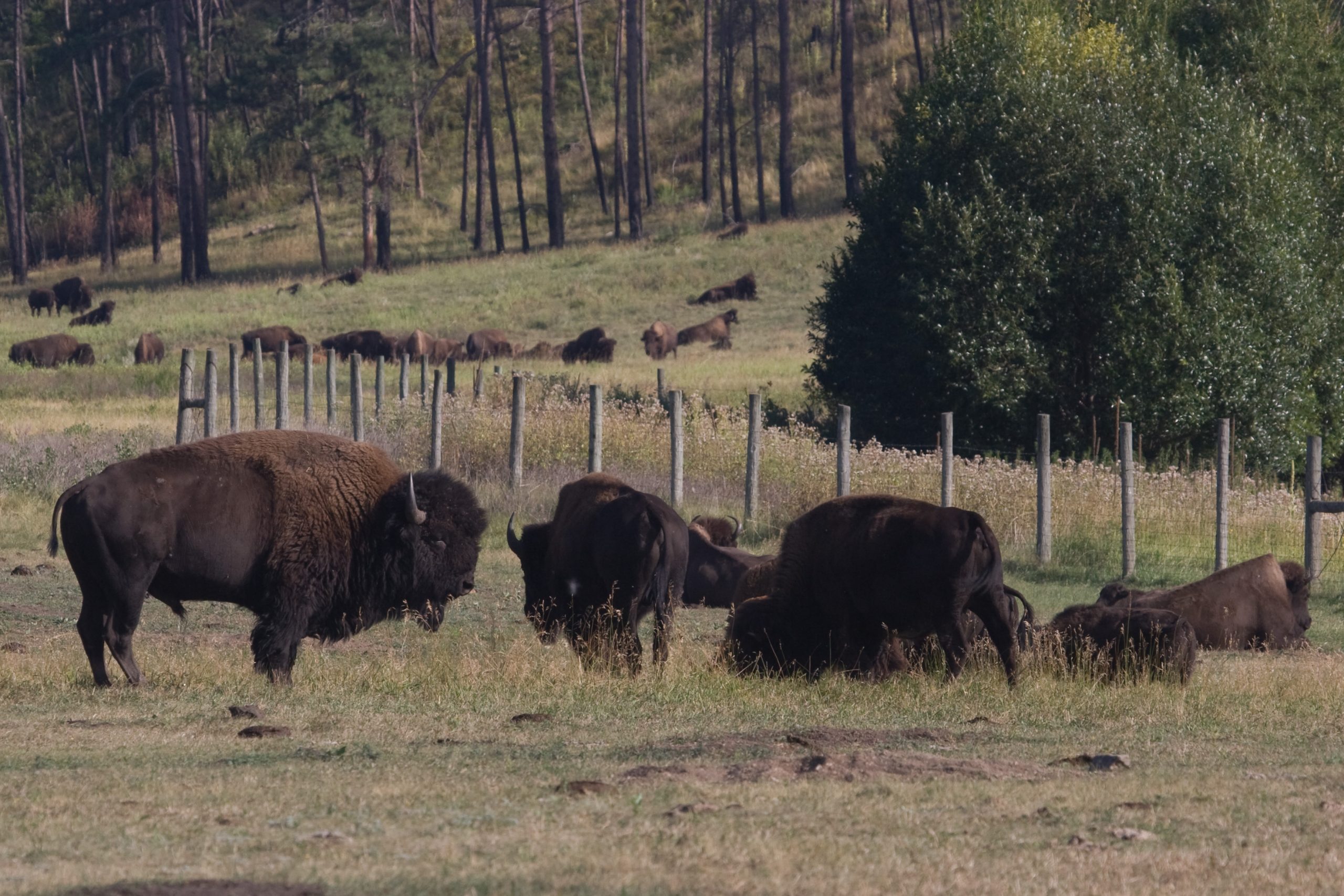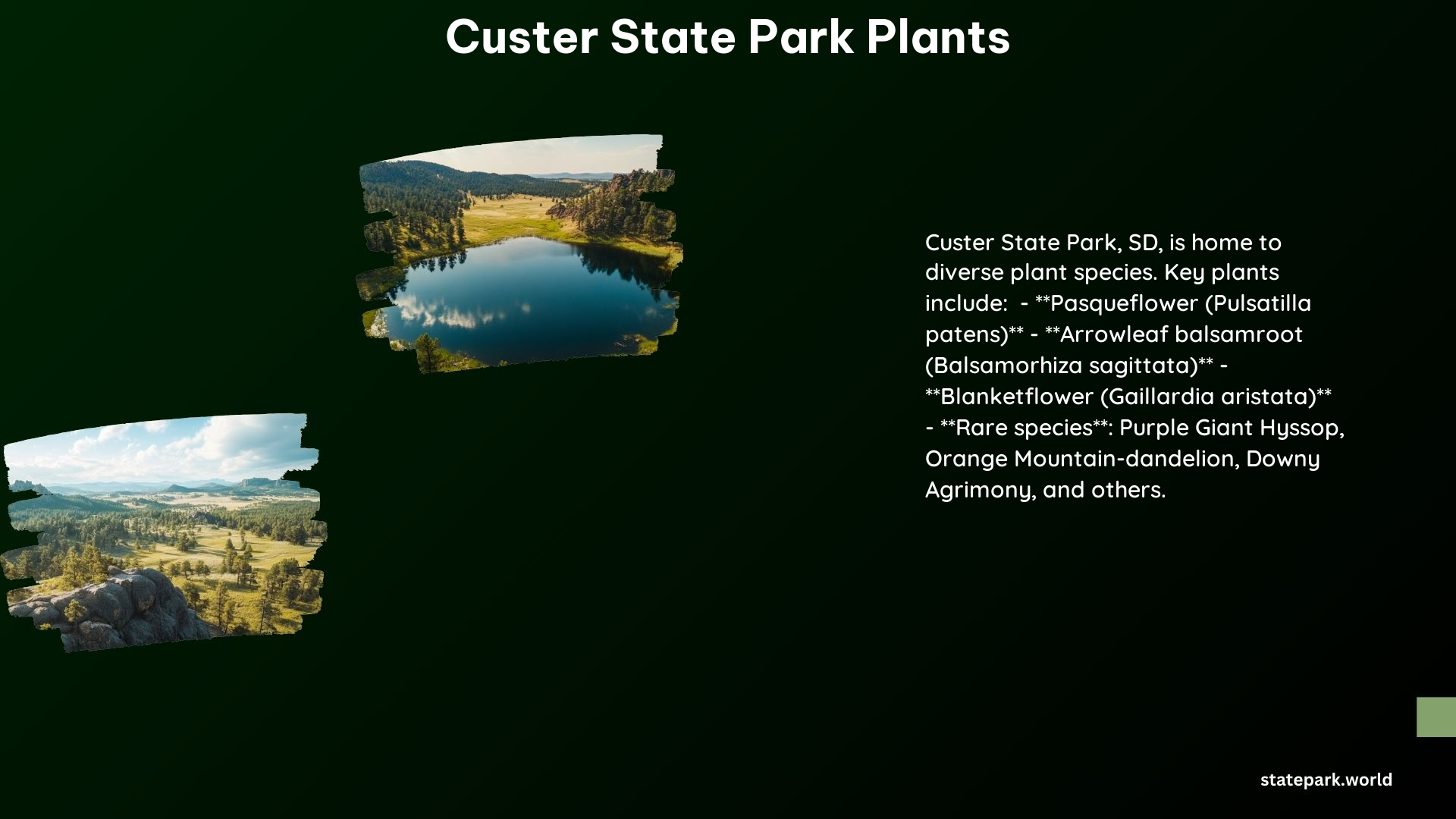Custer State Park, nestled in the heart of the Black Hills of South Dakota, is a nature lover’s paradise, boasting a rich and diverse array of plant life. From towering ponderosa pines to vibrant wildflowers, the park’s flora is a testament to the region’s unique ecosystem. In this comprehensive guide, we’ll delve into the common trees, captivating wildflowers, and rare or endangered plant species that call Custer State Park home.
Common Trees of Custer State Park

Custer State Park is renowned for its vast forests, which are predominantly composed of three tree species:
-
Ponderosa Pine (Pinus ponderosa): Covering approximately 90% of the park’s forested areas, the majestic ponderosa pine is the most abundant tree species. These towering giants can grow up to 200 feet tall and are known for their distinctive reddish-brown bark.
-
Quaking Aspen (Populus tremuloides): These graceful trees, with their distinctive white bark and fluttering leaves, are commonly found in the park’s riparian areas and meadows. The quaking aspen is a beloved sight, especially in the fall when its foliage transforms into a vibrant golden hue.
-
Bur Oak (Quercus macrocarpa): The bur oak is a sturdy and long-lived species that can be found in the park’s forests and woodlands. These trees are known for their large, lobed leaves and acorns, which provide food for a variety of wildlife.
Captivating Wildflowers of Custer State Park

Custer State Park is a true haven for wildflower enthusiasts, with a diverse array of blooms that paint the landscape in a kaleidoscope of colors. Some of the park’s most notable wildflowers include:
-
Pasqueflower (Pulsatilla patens): This delicate and striking flower is South Dakota’s official state flower. Blooming in the spring, the pasqueflower’s purple petals and fuzzy stems are a welcome sight along the park’s trails.
-
Rock Mountain Iris (Iris missouriensis): This showy wildflower, with its vibrant purple and yellow hues, can be spotted sparsely throughout the park’s trails and meadows.
-
Purple Coneflower (Echinacea purpurea): These bold and beautiful flowers, with their distinctive purple petals and prominent central cones, can be found along the park’s trails and in the Historic Area.
-
Blue Flax (Linum perenne): The delicate blue flowers of the blue flax are a true delight, attracting a variety of pollinators and adding a touch of elegance to the park’s landscape.
Rare or Endangered Plant Species in Custer State Park
While Custer State Park is home to a diverse array of plant life, some species are considered rare or endangered within the region. These include:
-
Purple Giant Hyssop (Agastache scrophulariifolia): This plant is listed as rare in South Dakota and can be found in a few select locations within the park.
-
Orange Mountain-dandelion (Agoseris aurantiaca): This species is reported from the northwest Black Hills and is considered rare.
-
Downy Agrimony (Agrimonia pubescens): This plant has a single known occurrence within Custer State Park, making it a rare and precious find.
Best Time to See Wildflowers in Custer State Park
The prime time to witness the vibrant display of wildflowers in Custer State Park is during the spring and early summer, typically from April to July. This is when the pasqueflower, Rock Mountain Iris, and a host of other species are in full bloom, creating a breathtaking natural spectacle.
Exploring Custer State Park’s Diverse Flora
Custer State Park is a true gem for nature enthusiasts, offering a wealth of opportunities to explore and appreciate the park’s diverse plant life. Whether you’re a seasoned botanist or a curious explorer, the park’s trails and scenic vistas provide ample opportunities to immerse yourself in the beauty of South Dakota’s wilderness.
References
- https://www.inaturalist.org/places/custer-state-park
- https://www.fs.usda.gov/activity/blackhills/recreation/natureviewing/?recid=25823&actid=63
- https://gfp.sd.gov/rare-plants/
- https://www.nps.gov/jeca/learn/nature/wildflowers.htm
- https://www.fs.usda.gov/detail/blackhills/learning/nature-science/
